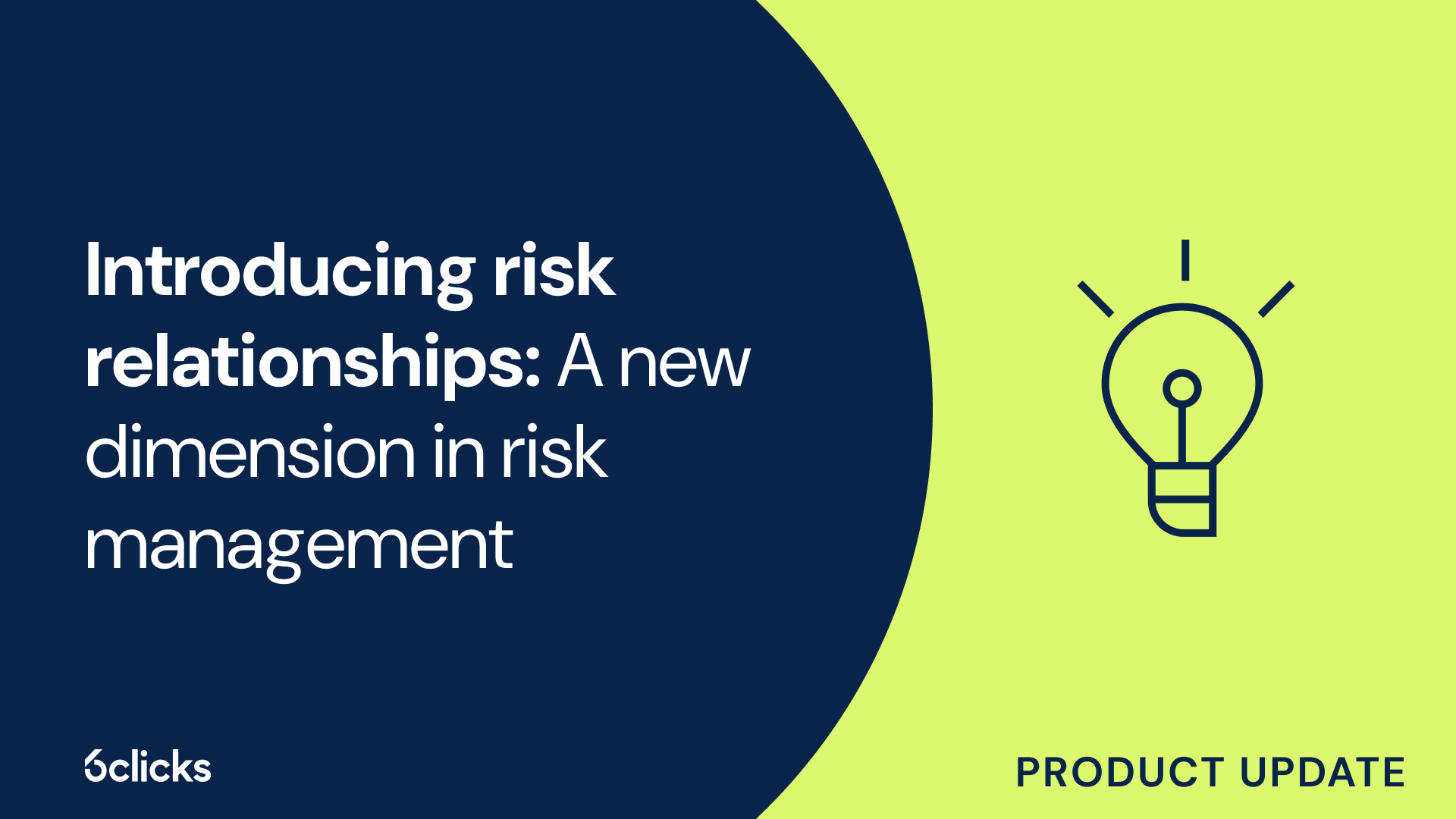Different types of risk relationships
6clicks’ risk relationships feature allows you to define two types of relationships between risks:
- Parent-child relationships: Parent risks are broad, high-level risks that can impact multiple aspects of an organization and encompass smaller, more specific risks called child risks. Risk categories like financial risks or operational risks are examples of parent risks, while market risks, credit risks, and liquidity risks which all fall under financial risks are considered child risks.
- Related risks: You can also link risks together without forming any hierarchy between them. These are known as related risks. For example, financial risks and operational risks can be related due to their similar potential impacts on an organization, such as financial loss or reputational damage.
How do risk relationships work?
When setting up risk relationships, there are only two rules you need to remember:
- Only two levels of hierarchy are applicable. Parent-child-grandchild relationships are not supported by the functionality. This means a parent risk cannot be assigned as a child risk to a different risk in the same way a child risk cannot be a parent risk to another. For example, if Risk A and Risk B have a parent-child relationship, Risk B cannot be a parent risk to Risk C. A parent risk can have multiple child risks and related risks, but it cannot have a parent risk. Meanwhile, a child risk can have only one parent risk and multiple related risks, and it cannot have a child risk.
- Only one type of relationship can be established between two risks. This means that you cannot link the same risk to another risk twice. If a child risk is already assigned to a parent risk, it can no longer be linked as a related risk to the parent risk and vice versa. For example, if Risk A is the parent risk and Risk B is the child risk, Risk B can no longer be added as a related risk to Risk A.
These linkage rules ensure that risk relationships are clear, structured, and provide the most value when running reports.
Configuring risk relationships
Follow these steps to start creating risk relationships:
On the 6clicks platform, go to the Risk Registers and select a risk from your list of identified risks.

This will open the details of the risk. Navigate to the side panel under the Linked Data tab to see the different icon tiles that represent each type of data that you can connect to risks, such as audits & assessments, assets, issues & incidents, vendors, and other risks.

Select the Risks ⚠️ icon tile. This is where linked risks will be displayed and categorized by relationship type. Click the Link 🔗 icon to start adding risks.

Once the Link Risks modal opens, first choose the risks you want to link to your selected risk. Then, indicate the type of relationship the linked risks will have with the selected risk. With the linkage rules in place, existing parent-child relationships are indicated, and you can no longer assign them as child risks to your selected risk as depicted below:

Click the Link button to finish. The linked risks will now be displayed under their respective linkage type sections.

Optimize risk management with 6clicks
By leveraging risk relationships, you can develop a thorough understanding of the interconnected impacts of risks and proactively address significant threats. Get started with 6clicks for an integrated risk management solution. You can also find the risk relationships knowledge base article here.











